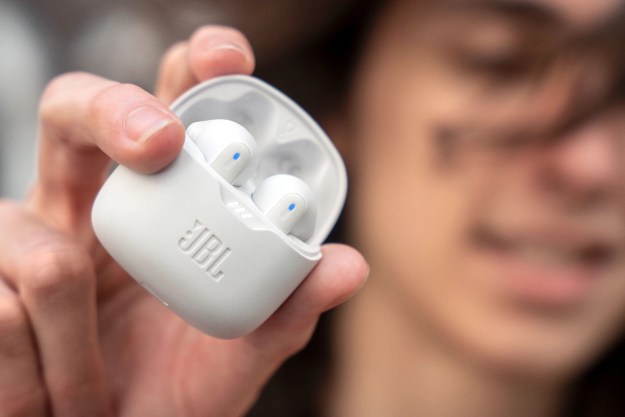
JBL is trying something new: an Indiegogo campaign for a set of solar-charging wireless headphones called JBL Reflect Eternal. They’re essentially a regular set of on-ear Bluetooth headphones, but the headband contains a solar energy collection panel made by Exeger, a Swedish technology company that specializes in light-powered applications.
That solar panel is the key to some pretty amazing claims from JBL regarding the Reflect Eternal’s ability to go without being plugged in. Assuming you start with a fully charged battery and only spend 3.5 hours listening to music per day, spending 1.5 hours outside per day is enough to deliver 68 hours of playtime. Two hours outside extends that to a whopping 168 hours of playtime, while 2.5 hours or more offers “virtually unlimited playtime,” according to the company’s Indiegogo page.
There is, of course, some fine print associated with these claims. They are based on the assumption that when you’re outside, you’re being exposed to at least 50,000 lux. That’s not going to be possible unless you’re outdoors during a bright, sunny day. Overcast days generally only produce about 1,000-2,000 lux. You don’t have to find your lux outside, though. Any source of light will work, including indoor lighting. JBL claims that three hours of indoor light will give you one hour of playtime.
If the light ever fails to materialize in sufficient quantities, you can still recharge the JBL Reflect Eternal via the less environmentally friendly USB-C power port. 15 minutes will get you 3 hours of playtime, and the battery can hold 24 hours of power.
Other than its solar-collection headband and charging system, the JBL Reflect Eternal bears a strong resemblance to the company’s $130 E45BT on-ear
Will the JBL Reflect Eternal resonate with buyers? We’re on the fence on that one. On the one hand, there are a lot of people looking for a greener choice when it comes to the products they buy, and these headphones certainly qualify. On the other hand, JBL isn’t the first company to try to crowdfund a set of solar-recharging
Since 2014, we’ve hardly seen any new attempts to make a set of solar headphones, and you’ve got to wonder why. Our guess is that the biggest benefit to the technology in most people’s minds is the elimination of charging anxiety. Because the latest wireless headphones are capable of storing between 30 and 40 hours of power, though, those concerns are far less top-of-mind for people than they used to be. We expect these numbers will only go up in the years ahead. JLab’s Epic Air Sport are a good example. With a fully-charged carrying case, they can last 70 hours.
We do need to point out that should you be interested in backing the JBL Reflect Eternals, the usual caveats around crowdfunding apply, even though JBL is obviously a well-known audio company. The campaign has already met its minimum funding requirement. It runs until January 27, with pledge amounts starting at $100 for early-bird backers. JBL claims that if the production run is successful, backers will receive their headphones as early as October 2020.
Editors' Recommendations
- Sony’s ULT Power Sound headphones and speakers go big on powerful bass
- 7 things Sonos’ first headphones will need to get right
- JBL’s retro-style wireless speakers could spark serious envy among Sonos fans
- Bluetooth headphones have been on planes for 10 years, so why do I still need a cable?
- JBL confirms U.S. pricing, release dates for new Tour One M2 and Tour Pro 2





